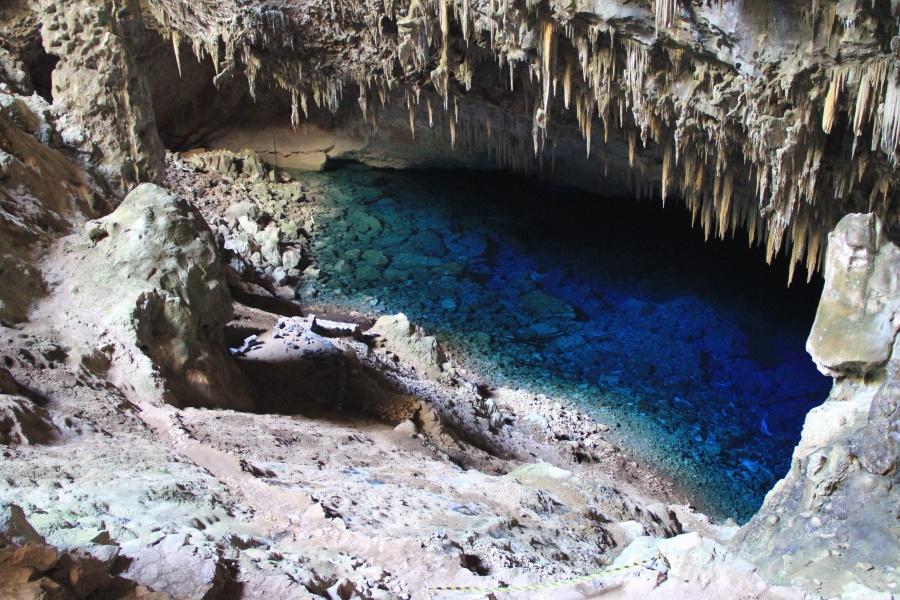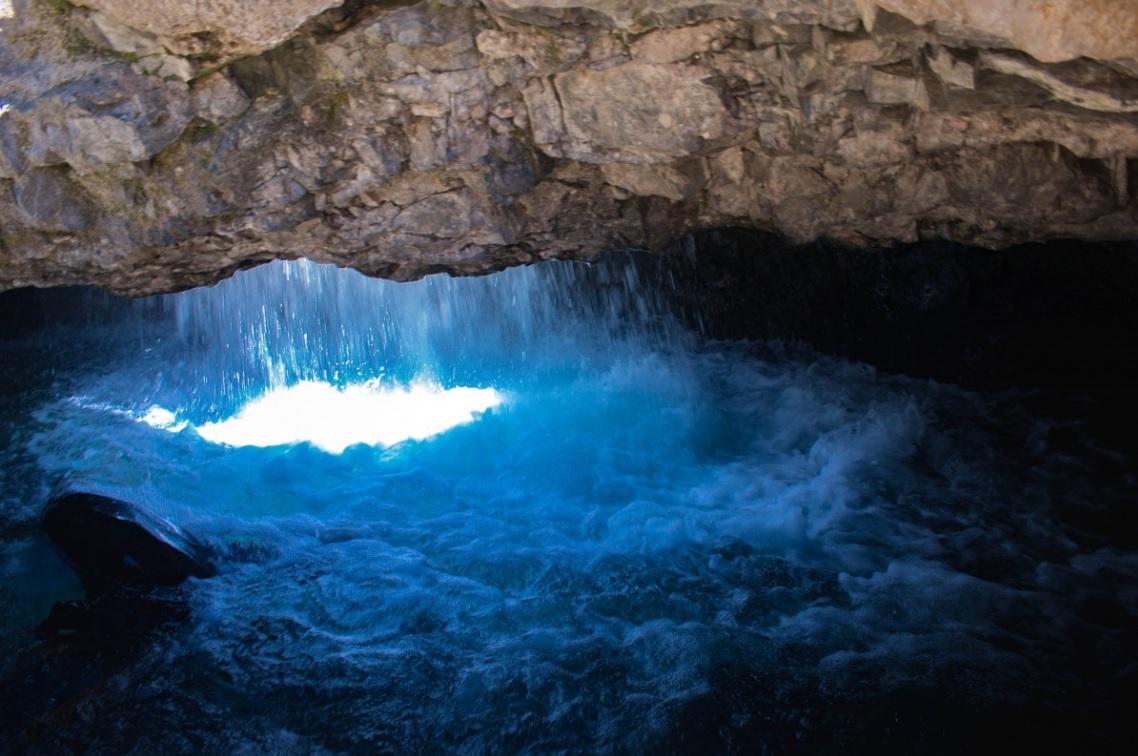What Is Groundwater and How Does It Form?


While commonly associated with flowing streams and pristine lakes, the majority of readily accessible freshwater (excluding polar ice caps and glaciers) resides underground as groundwater. Half the world's inhabitants rely on groundwater for primary or secondary water, making them a significant contributor to global water security. Furthermore, they account for 43% of all water used for irrigation globally.
In this article by thedailyECO, we explain what groundwaters are, examine its formation mechanisms, characteristic features, and various existing types.
What is groundwater?
Groundwater is a crucial component of the Earth's hydrological cycle, existing as water stored underground within rock and soil formations. Unlike readily visible surface water sources like rivers and lakes, groundwater flows slowly through interconnected spaces within these formations, forming aquifers.
The percentage of groundwater compared to total freshwater resources on Earth varies depending on factors such as location, climate, and geological conditions. However, on a global scale, groundwater accounts for roughly 30% of the Earth's freshwater supply.
What is the main source of groundwater?
The main source of groundwater is precipitation. This includes rain, snow, and other forms of moisture that fall from the sky. When precipitation reaches the ground, some of it evaporates, some runs off into rivers and streams, and some infiltrates the soil and rock formations to become groundwater. This process is called infiltration.
Did you know that hydrometeors encompass all water suspended in the Earth's atmosphere? Learn more about this atmospheric phenomena in this other article.
How does groundwater form?
The process of groundwater formation involves multiple steps and is quite intricate. Let us take a closer look:
- Precipitation: it all starts with rainfall, snowfall, or other forms of precipitation descending from the atmosphere.
- Percolation: the water that seeps downward infiltrates through layers of soil and rock beneath the surface. The rate of its movement is determined by the composition and permeability of these layers.
- Saturation zone: as the water descends further, it reaches a zone where all the spaces between soil and rock particles become completely filled with water. This saturated zone signifies the beginning of groundwater formation.
- Formation of the aquifer: in specific types of rock and soil formations, water gathers in porous and permeable layers, creating what we call aquifers.
- Replenishment: groundwater is constantly replenished through various means. Fresh precipitation consistently infiltrates the ground, while natural springs discharge water and humans extract it through activities such as pumping.
It is also important to note that the speed and volume of groundwater formation depend on various factors: precipitation levels, permeability of soil and rock, topography, and vegetation cover. Higher rainfall, greater permeability, flatter terrain, and more vegetation all contribute to increased groundwater recharge.
Be sure to check out this other article where we discuss what mangroves are and their significance in coastal environments.
Types of groundwaters
Groundwater exists in various forms depending on the geological formations and characteristics of the subsurface. The three main types are:
Aquifers are highly permeable rock formations that allow water to flow freely, acting as natural reservoirs. Composed of sand, gravel, or fractured rock, they store and supply significant freshwater volumes for drinking, irrigation, and industrial use. Aquifers are critically important for maintaining water security in many regions.
Unlike aquifers, aquitards feature smaller pores and cracks, significantly slowing down water movement. Although not readily usable due to limited flow, they play a crucial role in filtering pollutants and regulating groundwater flow within the subsurface. Composed of clayey sand or poorly fractured rock, aquitards contribute to the overall water system's health.
Aquicludes, on the other hand, are primarily composed of clay or dense rock, completely impede water flow, acting as impermeable barriers. While not directly contributing to usable water, they play a key role in directing water movement within the subsurface and preventing contamination between different aquifer layers. Their presence is crucial for maintaining the integrity of groundwater systems.
Salinization occurs when freshwater groundwater reservoirs become saline, meaning they contain more dissolved salts than fresh water typically should. Discover more about this significant geological phenomenon in our article.

Importance of groundwater
Groundwater is a vital component of the Earth's ecosystem, providing numerous benefits beyond its primary function as a source of clean water.
Accessible through natural springs or wells, it accounts for about half of the world's drinking water, playing a critical role in agriculture, livestock rearing, and human consumption. Specifically, they account for 43% of all water used for irrigation globally.
The journey of groundwater through soluble rocks like limestone not only results in the formation of unique geological structures such as caves, stalactites, and stalagmites but also creates habitats for diverse species, including bats and various invertebrates. These formations add to the landscape's diversity and support subterranean biodiversity. This underground water system is home to a range of organisms, from bacteria to crustaceans and insects, contributing significantly to ecosystem health by supporting various ecological processes.
Groundwater also replenishes surface water bodies, such as rivers, lakes, and streams, maintaining their levels and flow. This interaction is crucial for the sustainability of surface water resources.
In the United States, groundwater is indispensable for nearly half the population who depend on it for their drinking water. Its significance extends further into agriculture, where it is primarily used for crop irrigation, highlighting its essential role in food production and ecosystem support.
Learn more about inland waters in this other article.
What are the environmental issues with groundwater?
Groundwater's vulnerability to contamination arises from its slow movement and hidden nature. This susceptibility is further compounded by the limited mixing of water and pollutants, allowing plumes of salty or contaminated water to travel significant distances without dissipating.
Pollution sources vary, ranging from natural mineral leaching from rocks to anthropogenic causes like agricultural runoff and industrial waste. Of particular concern is the rise in nitrate levels, which can pose health risks upon consumption.
Overexploitation presents additional challenges, depleting groundwater resources at an unsustainable rate. This can lead to reduced aquifer pressure, causing land subsidence and saltwater intrusion in coastal regions, ultimately exacerbating desertification and diminishing accessible freshwater.
Sustainable management practices are imperative to mitigate these issues and ensure the long-term viability of groundwater resources.
You might be interested in this other article, where we discuss the difference between ocean and sea.

If you want to read similar articles to What Is Groundwater and How Does It Form?, we recommend you visit our Environment (other) category.







